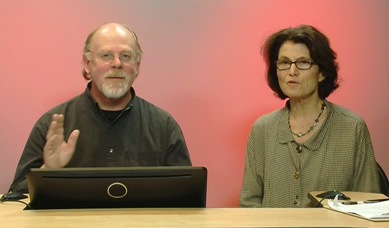
Cambridge InsideOut - Nov 6, 2018
Special Guest Host: Patrick Barrett
Possible Topics:
1) Central Square
2) Envision Cambridge
3) Cambridge Growth Policy Document - 1993 w/2007 Update
4) First Street Garage and Sullivan Courthouse redevelopment
5) Nov 5, 2018 City Council meeting
6) Oct 29 City Council meeting
7) News, Upcoming Events, etc.
Civic Opportunities
"I only ask that you take this study and apply it the real world. In my short time here (a little over a decade now) I have seen report after report come out of the Community Development Department that makes the grand sweeping assumption that all projects in this city start tabula rasa; when nearly the entire city is completely built out. What will this change do to small developments? How many building permits were pulled this year alone under the current ordinance at 9,999 sq ft? What would doubling the requirement really accomplish? You may find it startling that the current system is just fine and that you're going a good job or maybe you're just terrible at advertising that fact. If your goal is to build more housing then you really need to ask some deeper questions of the city and its staff before you make any changes. Market rate housing IS the "affordable" housing for the middle class, the less you build in a finite area the more it costs. Affordable housing does nothing for the group this report suggests is struggling the most and altering it to the extremes suggested without the slightest exploration in the real world is irresponsible and reckless
Regards,
Patrick W. Barrett III, Esq.
On Deck for the Nov 5, 2018 Cambridge City Council meetingHere's my first pass at the interesting stuff: Manager's Agenda #4. Transmitting Communication from Louis A. DePasquale, City Manager, relative to the appropriation of $92,000 from Free Cash to the Public Investment Fund Police Extraordinary Expenditures account for the fit out of a new Police Reporting Station at 628 Massachusetts Avenue in Central Square. The new substation will be a welcome addition to this part of Central Square. Manager's Agenda #6. Transmitting Communication from Louis A. DePasquale, City Manager, relative to the appropriation of $200,000 from Free Cash to the Public Investment Fund Community Development Extraordinary Expense Account to fund a Bicycle Plan Update with Feasibility Analysis and Implementation Plan. As the Manager's communication says, "The 2015 Cambridge Bicycle Plan created a bicycle network vision, an aspirational plan for creating a high-quality bicycle infrastructure network on streets and paths in the city. The Plan did not include technical studies to evaluate space and operational constraints for each street segment to determine the feasibility of creating separated facilities in the short term." It's important to highlight the fact that the Plan was never carved in stone and immutable. It was an aspiration, i.e. a Big Wish intended to address the general issue of bicycle safety and "comfort". Where much of this went wrong was in the decision to rush through a number of half-baked "quick build" projects. This latest expenditure could yield balanced, sensible (and probably more expensive) plans or just more of the same - depending, at least in part, on whether City staff proceed with open minds or pre-baked conclusions. Manager's Agenda #10. Transmitting Communication from Louis A. DePasquale, City Manager, relative to the appropriation of $150,000 from Free Cash to the Public Investment Fund Finance Extraordinary Expenditures account to support a 12-month digital equity research initiative. While the expressed purpose of this initiative is "to study and analyze gaps affecting the City’s low-income or otherwise disadvantaged population in use of the broadband internet", it also formally ends the Broadband Task Force. What the communication does not emphasize is that some proposals for a full municipal broadband system that could have had a very significant price tag and financial exposure for the City grew out of that Task Force - something that was not well-received by the City Manager. On the flip side, there may be ways in which such a system could pay for itself. That conversation will likely continue outside the confines of City boards. Manager's Agenda #11. Transmitting Communication from Louis A. DePasquale, City Manager, relative to the appropriation of $5,000,000 from the Community Benefits Stabilization Fund to the Grant Fund Human Services Other Ordinary Maintenance account to be used: (1) for grant agreements with nonprofit organizations to address the City’s most pressing service needs, and (2) to enter into a contract with a Project Evaluator to work with the grant recipients as well as the Community Benefits Advisory Committee (CBAC), which is overseeing this effort. Manager's Agenda #12. A communication transmitted from Louis A. DePasquale, City Manager, requesting the City Council authorize the City Manager to enter into a contract with a consultant service agency to provide evaluation services for 5 years from the date of the execution of the contract pursuant to G.L. c. 30B, §12b for the purpose of obtaining independent evaluation services to assess the use of community benefits funding by City-based nonprofit organizations in accordance with the Community Benefits Ordinance and the Guiding Principles of Community Benefits Funding. While I claim no great understanding of this ordinance and its funding mechanisms, there are a few points worth making here. First, this was spawned by concerns about prior community benefits agreements associated with zoning proposals - generally upzoning - in which a property owner offered some benefit (such as the donation of the Foundry building or contributions to scholarship funds, community centers, etc.) to secure the necessary votes for the proposed zoning change. I believe the intention was to regularize this process so that it was not conducted as part of some relatively private understanding that yielded benefits to organizations favored by individual councillors. There is also the notion that agreements like this are a bit like purchasing zoning relief by sweetening the pot with cash. Zoning should be primarily driven by good planning rather than the extraction of financial benefits. Another concern that I have is that the universe of recipients of these "community benefits" now seems to be limited to subsidized housing and various social service agencies. One of the more significant things that grew out of the K2C2 deliberations several years ago was the understanding that "community beneifit" should also include things like placemaking and an improved retail environment. It would be a shame if those priorities were forgotten. Order #2. That the City Manager work with the Fire Department to evaluate the existing capacity of fire stations in the Kendall Square area and whether a new fire station is needed, and if so, determining the feasibility of locating a plot of land for this use. Councillor Mallon, Mayor McGovern, Councillor Toomey It's worth noting that there used to be a fire station in Kendall Square at the intersection of Dock Street and Main Street. That station was sold by the City around 1999-2000 to be repurposed as a Bed & Breakfast/restaurant (now "The Kendall"). Order #3. Further Study Needed on First Street Garage. Councillor Zondervan, Vice Mayor Devereux, Councillor Siddiqui, Councillor Carlone This is sure to be a Big Deal in the months ahead with a lot of activism brewing in East Cambridge. It is worth again emphasizing that even if you have a 50-year brooding resentment about the Sullivan Courthouse being built in the first place, the First Street Garage was built, at least in part, to support the traffic associated with that building. The legal machinations over the development rights at the Courthouse site appear to all be over, but the preliminary plans were based on the ability to lease space in the First Street Garage or, if that was blocked politically, in the Galleria garage. What complicates this now is the possibility that the Cambridgeside Galleria complex may undergo significant re-envisioning which might involve a reduction in parking capacity. There are lots of moving parts in all of this. Order #4. Rethink Approach to Envision Cambridge. Councillor Zondervan, Vice Mayor Devereux This is sure to be a point of contention at the meeting. The Order seems to focus primarily on the public relations error of leading with just three recommendations which have not all been received with love and kisses. One could also argue that there were some underlying flaws in the Envision process itself - primarily its focus on a long list of ideas growing out of working committees rather than a unified vision for the future. Committee Report #1. A communication was received from Paula Crane, Deputy City Clerk, transmitting a report from Councillor Quinton Zondervan, Chair of the Neighborhood and Long Term Planning, Public Facilities, Arts and Celebration Committee, for a public hearing held on Oct 16, 2018 to discuss CMA 2018 #196 and any other matter related to Jerry’s Pond. One pet peeve that I harbor is the notion that hazardous sites should just be fenced off or otherwise sealed off for eternity rather than cured. This applies to the asbestos-laden Sullivan Courthouse building as well as Jerry's Pond. I expressed much the same point of view years ago in suggesting that water from the Stony Brook system should be directed to the Muddy River in order to increase the flow. The response was that this might disturb toxins in the river bottom. A little disturbance may not be such a bad thing if one day those materials are removed. Sealing off a problem is not the ideal way to address a problem. - Robert Winters |
| 2018 | Mon | Tue | Wed | Thu | Fri | Sat | Mon | Tue | Wed | Thu | Fri | |
| Early Voting Location (2018) | Oct 22 | Oct 23 | Oct 24 | Oct 25 | Oct 26 | Oct 27 | Oct 29 | Oct 30 | Oct 31 | Nov 1 | Nov 2 | Total |
| Main Library (449 Broadway) | 222 | 177 | 206 | 158 | 180 | 286 | 275 | 265 | 338 | 296 | 547 | 2950 |
| Election Commission (51 Inman St.) | 297 | 170 | 245 | 143 | 169 | 138 | 305 | 276 | 449 | 359 | 588 | 3139 |
| O'Neill Library (Rindge Ave.) | 175 | 96 | 137 | 94 | 142 | 159 | 193 | 114 | 286 | 206 | 331 | 1933 |
| Water Department (at Fresh Pond) | 183 | 145 | 112 | 111 | 152 | 200 | 175 | 163 | 225 | 194 | 329 | 1989 |
| Police Department (East Cambridge) | 153 | 55 | 86 | 90 | 103 | 92 | 145 | 113 | 215 | 152 | 291 | 1495 |
| All Locations | 1030 | 643 | 786 | 596 | 746 | 875 | 1093 | 931 | 1513 | 1207 | 2086 | 11506 |
| 2016 | Mon | Tue | Wed | Thu | Fri | Sat | Mon | Tue | Wed | Thu | Fri | |
| Early Voting Location (2016) | Oct 24 | Oct 25 | Oct 26 | Oct 27 | Oct 28 | Oct 29 | Oct 31 | Nov 1 | Nov 2 | Nov 3 | Nov 4 | Total |
| Main Library (449 Broadway) | 619 | 396 | 465 | 262 | 289 | 688 | 483 | 376 | 624 | 436 | 848 | 5486 |
| Election Commission (51 Inman St.) | 576 | 399 | 465 | 304 | 304 | 401 | 532 | 399 | 571 | 455 | 564 | 4970 |
| O'Neill Library (Rindge Ave.) | 387 | 208 | 302 | 171 | 207 | 373 | 273 | 216 | 395 | 279 | 478 | 3289 |
| Water Department (at Fresh Pond) | 368 | 207 | 218 | 131 | 157 | 429 | 233 | 216 | 348 | 254 | 474 | 3035 |
| Police Department (East Cambridge) | 290 | 186 | 225 | 93 | 104 | 263 | 251 | 205 | 349 | 260 | 508 | 2734 |
| All Locations | 2240 | 1396 | 1675 | 961 | 1061 | 2154 | 1772 | 1412 | 2287 | 1684 | 2872 | 19514 |
Total Cambridge ballots cast in the 2016 Election was 53,282 (including Early Voting). 36.6% of ballots cast were done via Early Voting.
A First Look at the Oct 29, 2018 Cambridge City Council Agenda
Manager's Agenda #10. Transmitting Communication from Louis A. DePasquale, City Manager, relative to the appropriation of $67,179.02 from Free Cash to the Public Investment Fund Public Works Department Extraordinary Expenditures Account to support additional tree plantings in the Gore Street Neighborhood. What is notable is that the street tree that was lost has been appraised at $67,179.02. I'd love to learn more about how that figure was derived. Especially the two cents. Charter Right #1. That the Chairs of the Ordinance Committee schedule a hearing on Tree Protections and the Chairs of the Health & Environment Committee schedule public hearings on Tree Protections and the preliminary results from the Ordinance Committee hearing. There are good ways and bad ways to do this. As a side note, I heard that the tulip tree on Cambridge Street that was at the center of a controversy almost two decades ago (with at least one person chaining herself to the tree) was removed recently due to internal rot. Some have suggested that this may have been helped along, but in any case the tulip tree is no more. Charter Right #2. The City Manager be and hereby is requested to direct the Community Development Department to provide a written timeline of what specific steps must take place in order to take a final vote on the Affordable Housing Overlay legislation. Communications #6. Sundry communications received relating to opposition of City Envision proposal. My sense is that very few people know much about the proposed Subsidized Housing Overlay proposal and its provisions to permit neighboring properties to be redeveloped as subsidized housing as of right a) at densities up to four times what is allowed under current zoning, b) with minimal setback requirements, c) and with no objections permitted. The proposal is a severe departure from the Growth Policy Document that has been successfully applied for nearly 25 years. The Overlay proposal was panned at the Planning Board for many reasons. It does nothing to address the housing affordability problem as most people understand it, i.e. the difficulty most people have in finding an affordable place to own or rent without being forced to apply to a government agency for housing. Communications #3. A communication was received from Charles Hinds, President East Cambridge Planning Team, regarding the disposition process of the First St. Garage. The First Street parking garage is there largely because it served the needs of the Courthouse. The primary reason it has been underutilized (hence the available surplus of parking) is because the Courthouse has been closed for some time. Sure, some things have changed in the interim and perhaps in an ideal world the Courthouse building would be scaled down more than is proposed, but courts have ruled that the re-purposing of the Courthouse building may proceed as planned. Order #1. That the City Manager is requested to report back to the City Council on offering early voting in City Council and School Committee elections. Vice Mayor Devereux, Mayor McGovern, Councillor Siddiqui As much as I want everyone to vote (I'm one of the only 116 Cambridge voters who has voted in every citywide Cambridge election since 1997), I really don't see how the substantial increased cost of this proposal is justifiable. Unlike state and federal elections, the Commonwealth won't be picking up the tab. It really is very simple to vote in municipal elections on Election Day and absentee voting could simply be expanded to achieve the same goal. Order #9. That the City Manager is requested to provide an update on any current discussions or plans for extending the Alewife Greenway Bike Path from Alewife to Sherman Street. Councillor Kelley, Vice Mayor Devereux, Councillor Carlone This is a great idea. In fact, if the path switched over to the north side of the tracks at Sherman Street, you could extend it all the way to Porter Square with the added treat that you could pass under Walden Street through the old cattle pass. Order #13. That the City Manager is requested to confer with City staff and report back to the City Council on the status of the Cambridge Street Bicycle Safety Demonstration Project and on any efforts to assess how successful the project has been and what lessons the City may learn from the project that may help inform street allocation and design decisions elsewhere. Councillor Kelley, Vice Mayor Devereux Order #14. That the City Manager is requested to confer with City staff and report back to the City Council on opportunities and plans to increase signage or other communication efforts to help ensure that all users of Brattle Street between Eliot and Mason Streets understand the cyclists may be using Brattle Street in the opposite direction of prevailing motor vehicle traffic. Councillor Kelley, Vice Mayor Devereux Order #19. That the City Manager is requested to include protected bicycle infrastructure along the entire length of River Street as part of the FY20 River Street Redesign project. Councillor Zondervan, Mayor McGovern, Vice Mayor Devereux, Councillor Carlone All of these are covered under the City's "Listen Zero" policy regarding bicycle accommodation. There were and still are better ways to re-envision traffic flow on Cambridge Street, and Brattle Street should have been made into a two-way "slow street" from Mason St. to Eliot St. connecting to Mt. Auburn St. As for River Street, there is no way on earth that safer bicycle accommodation won't be a central part of the plan, and this is one location where traffic calming and some separation of cyclists from traffic (including drivers just off the Pike who have not yet mentally slowed down) is completely justified. Committee Report #1. A communication was received from Donna P. Lopez, City Clerk transmitting a report from Councillor Jan Devereux, Chair and Councillor Quinton Y. Zondervan, Co-Chair of the Health and Environment Committee for a public hearing held on Sept 27, 2018 to discuss stormwater management best practices and get an update on how Cambridge will be impacted by the EPA’s new Municipal Separate Storm Sewer System (MS4) permit, which took effect on July 1, 2018. I'm highlighting this report simply because I think that every Cambridge citizen should learn more about the "hidden city" under their feet, i.e. the infrastructure that we depend on every day. We should have regular citizen seminars on this. Committee Report #2. A communication was received from Donna P. Lopez, City Clerk transmitting a report from Councillor Jan Devereux, Chair and Councillor Quinton Y. Zondervan, Co-Chair of the Health and Environment Committee for a public hearing held on Oct 9, 2018 to was to receive an update on progress towards Zero Waste goals and to discuss successes and challenges of the citywide composting and recycling programs to date. Two words - Recycle Right. If you want to ensure the economic viability of recycling you have to be mindful of the eventual end markets. Recycling is a lot more than throwing things into a blue (or green) container. Committee Report #4. A communication was received from Donna P. Lopez, City Clerk, transmitting a report from Councillor Dennis J. Carlone and Councillor Craig A. Kelley, Co-Chairs of the Ordinance Committee, for a public hearing held on Oct 2, 2018 to discuss a petition filed by the City Council to amend the zoning ordinances in Articles 2.000, 4.000, 6.000 and 11.000 and to establish provisions for Cannabis Uses. I really hope the City Council reconsiders the proposal to allow pot shops to open as of right in all of the City's BA-1 zones [base zoning map]. These include many of our small "mom 'n pop" mixed residential/commercial zones. [Full disclosure - I live in a BA-1 zone, but I'm directly across the street from a school and have a day care and two Montessori schools as neighbors, so I'm within the buffer zone.] This is fundamentally different than allowing pot shops along a BA corridor like North Mass. Ave. [BA-2] or Cambridge Street east of Inman Square [BA], though I'll leave it to residents along those corridors to chime in for themselves. The Western Ave. corridor is primarily BA-3. A proposed Order in this committee report calls for allowing adult use (recreational) pot shops as a use as of right in all BA-1, BA-2 and BA-3 districts. Another proposed Order would reduce the buffer zone around schools and other youth facilities from 500 ft. to 300 ft. Communications & Reports #1. A communication was received from City Clerk Donna P. Lopez, transmitting a communication from Councillor Mallon, transmitting notes for the first meeting of the Mayor's Arts Task Force. This meeting was mainly just introductions, but it's worth keeping an eye on where this Task Force is headed. - Robert Winters |
Notes from the OK Corral - The Envision Cambridge Housing Working Group
Tues, Oct 30, 2018 -- Today's Homework Assignment:
Please identify which policies, if any, from Cambridge's Growth Policy Document should be changed.
[To the best of my knowledge, these important policies have never been part of the discussion among the current Envision Cambridge Advisory Committee or its various Working Groups. Indeed, some of the current recommendations growing from the Envision Cambridge process clearly contradict some of these current policies. - RW]
Cambridge Growth Policy - Toward a Sustainable Future Policy 1 Policy 2 Policy 3 Policy 4 Policy 5 Policy 6 Policy 7 1. Such action will permanently forestall excessive development at the core campus of an existing institution, in particularly sensitive locations; or 2. Existing institutional activity in a core campus area will be reduced or eliminated, particularly at locations where conflict with existing residential communities has been evident or is possible in the future; and 3. The potential for future commercial, tax paying development is not significantly reduced; or 4. The presence of a stable, well managed institutional activity could encourage, stimulate, and attract increased investment in non institutional commercial tax producing development. Policy 8 Policy 9 1. Those areas can adapt to new commercial and industrial patterns of development; 2. The residential neighborhood edges abutting such areas are strengthened through selective residential reuse within the development areas or through careful transition in density, scale and lot development pattern; 3. New uses and varied scales and densities can be introduced into such areas; 4. Uses incompatible with the city’s existing and future desired development pattern are phased out. Policy 10 1. To provide opportunities for those who work in the city to live here; 2. To limit the use of the automobile to get to Cambridge and to travel within Cambridge; 3. To encourage more active use of all parts of the city for longer periods throughout the day; and 4. To limit the secondary impacts of new development on the existing, established neighborhoods. These impacts may be both economic, as in the increased demand placed on the limited stock of existing housing, and environmental, as in the increase in traffic on neighborhood streets. Policy 11 Policy 12 For example: low rent industrial space for start up enterprises; locations for industrial use and development which could be compromised by proximity to other, incompatible, uses, including residential uses; small commercial enclaves which directly serve their immediate surrounding residential neighborhood; locations appropriate for gas stations, car repair facilities, tow yards, etc.; structures or clusters of structures eligible for local historic district designation; or for designation as a local conservation district; environments as frequently found in the Residence “A” districts, where a unique combination of distinctive architecture and landscaped open space prevails; areas designated or eligible as national register historic districts. Policy 13 Policy 14 Policy 15 Policy 16 Policy 17 Policy 18 Policy 19 Policy 20 Policy 21 Policy 22 Policy 23 Policy 24 Policy 25 Policy 26 Policy 27 Policy 28 Policy 29 Policy 30 Policy 31 Policy 32 Policy 33 Policy 34 Policy 35 Policy 36 Policy 37 Policy 38 Policy 39 Policy 40 Policy 41 Policy 42 Policy 43 Policy 44 Policy 45 Policy 46 Policy 47 Policy 48 Policy 49 Policy 50 Policy 51 Policy 52 Policy 53 Policy 54 Policy 55 Policy 56 Policy 57 Policy 58 Policy 59 Policy 60 Policy 61 Policy 62 Policy 63 Policy 64 Policy 65 Policy 66 Policy 67 Policy 68 Policy 69 Policy 70 |
Evolving Murals

Queendom
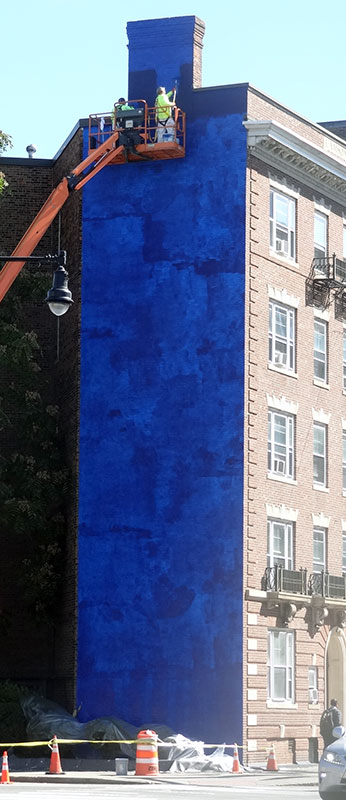
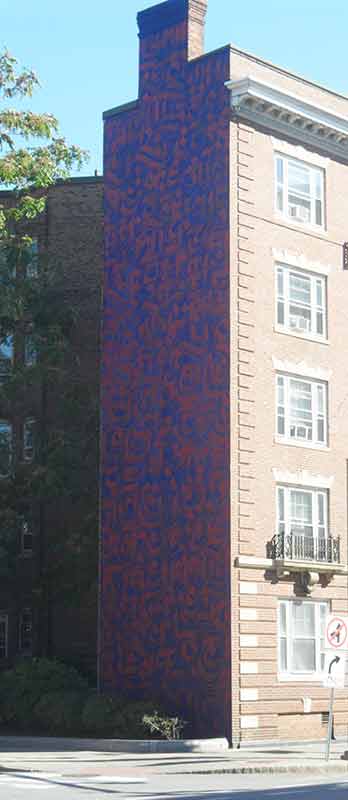
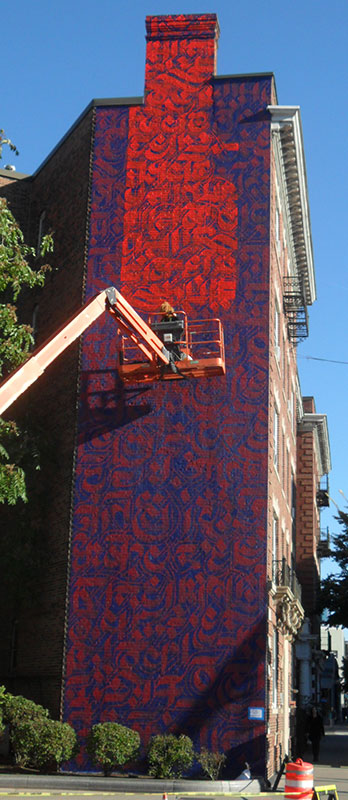
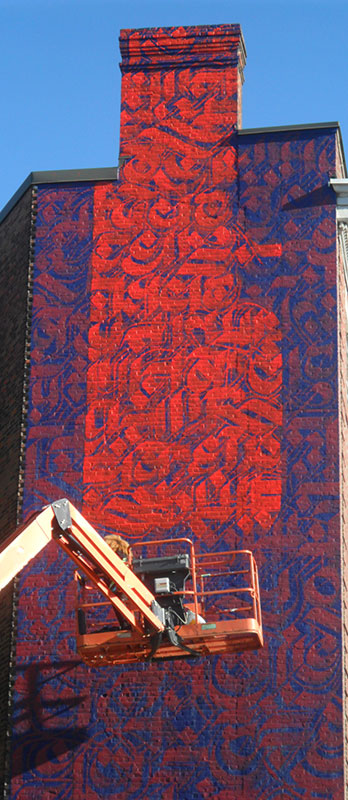
Women's Independent Living Group (WILG)
Oct 7 - I recently merged the most recent voter history file from the Sept 4 Primary with my mega-database going back to 1997. If you have ever wondered how many people have voted in every Cambridge citywide election since then (including municipal elections, federal elections, primary elections, and special elections), there are now only 116 of us (and I personally know at least 52 of those 116). Maybe we should form a club. - RW
PS - I'll do some histograms and other goodies from the latest data when I have a few minutes to spare. I also take requests.
 Envision Cambridge Updates - Sept 12 Advisory Committee & Sept 13 Housing Working Group Presentation
Envision Cambridge Updates - Sept 12 Advisory Committee & Sept 13 Housing Working Group Presentation100% Affordable Housing Overlay Proposal (Sept 13, 2018)
Super-Inclusionary Housing Proposal (Sept 13, 2018)
Environment Performance Incentive Proposal (Sept 13, 2018)
Combined Super-Inclusionary & Environmental Performance Scenarios (Sept 13, 2018)
CIVIC CALENDAR
Mon, Nov 5
5:30pm City Council meeting (Sullivan Chamber)
6:00pm Mid-Cambridge Neighborhood Conservation District Commission (MCNCDC) meeting (2nd Floor Meeting Room, City Hall Annex, 344 Broadway)
Tues, Nov 6
7:00am-8:00pm State Election (citywide) - VOTE!
9:00pm Cambridge Election Commission meeting (Senior Center, 806 Mass. Ave.)
Wed, Nov 7
1:00pm The City Council's Health and Environmental Committee will conduct a public hearing to discuss the safety of natural gas infrastructure in Cambridge, the use of contractors, including Feeney Brothers, and any related matter. (Sullivan Chamber)
3:00pm License Commission Public Hearing (Lombardi Building, 831 Mass. Ave, Basement Conference Room)
5:30pm Transit Advisory Committee meeting (Senior Center, 806 Mass. Ave.)
2:00pm The City Council's Transportation and Public Utilities Committee will conduct a public hearing to discuss the Federal Communications Commission’s new policy on regulating small cell technology and the City’s response and policies. (Sullivan Chamber)
5:30-7:00pm Commission for Persons with Disabilities meeting (51 Inman St., 2nd Floor Conference Room)
3:00pm The City Council's Health and Environmental Committee will conduct a public hearing to discuss draft recommendations from the Envision Cambridge Climate and Environment working group and any other related matters. (Sullivan Chamber)
Wed, Nov 14
8:00-9:30am Recycling Advisory Committee (RAC) Meeting (Sullivan Chamber, City Hall)
3:00pm The City Council's Government Operations, Rules and Claims Committee will conduct a public hearing to discuss the Policy Order adopted regarding Cambridge publicly finance Municipal Election Program and the Cambridge Municipal People’s Pledge Program. This Hearing will be televised. (Sullivan Chamber)
5:30-7:30pm Bicycle Committee meeting (4th Floor Conference Room, 344 Broadway)
5:30pm Cambridge Redevelopment Authority Board Meeting (Police Station, 125 Sixth St., First Floor Community Room)
[Meeting Agenda and supporting materials]
Thurs, Nov 15
10:00am Pole & Conduit Commission meeting (Lombardi Building, 831 Mass. Ave, Basement Conference Room)
6:00pm LGBTQ+ meeting (Windsor St. Health Center, 119 Windsor St.)
6:00-8:00pm Pedestrian Committee Meeting (4th Floor Conference Room, 344 Broadway)
Mon, Nov 19
5:30pm City Council meeting (Sullivan Chamber)
6:00pm Half Crown-Marsh Neighborhood Conservation District Commission Meeting (Lombardi Building, 831 Mass. Ave, Basement Conference Room)
1:00pm The City Council's Public Safety Committee will conduct a public hearing to review the current status of the Short-Term rental (STR) registration and enforcement efforts in Cambridge, including any legal proceedings, the exploration of possible new legal proceedings against illegal STR operators or platforms and will assess the City’s need to implement new policies or contracts given the state’s inability to create a master registration of any sort and to discuss opportunities to work with the state to create a funding stream for STRs. (Sullivan Chamber)
Mon, Nov 26
5:30pm City Council meeting (Sullivan Chamber)
5:30pm Avon Hill Neighborhood Conservation District Commission Meeting (Lombardi Building, 831 Mass. Ave, Basement Conference Room)
4:00pm The City Council's Transportation and Public Utilities Committee will conduct a public hearing to discuss the next the steps in creating a protected bike network and an update on future Vision Zero infrastructure improvements. (Sullivan Chamber)
3:00pm The City Council's Public Safety Committee will conduct a public hearing to review the Cambridge Police Department’s truck enforcement actions, to discuss how Cambridge can better use navigational platforms like Garmin and Signage to keep trucks off of illegal or impractical roads, how Cambridge may extend its no-truck designations, how pilot programs on sideguards are working, how City contracts may be used to demand safer vehicles for both contractors and sub-contractors for City projects and similar truck-related issues. (Sullivan Chamber)
Thurs, Nov 29
1:00pm The City Council's Transportation and Public Utilities Committee will conduct a public hearing to discuss truck safety measures in the City. (Sullivan Chamber)
5:00pm The City Council's Neighborhood & Long-Term Planning; Public Facilities, Arts and Celebrations Committee will conduct a public hearing to discuss Urban Form Recommendations from the Community Development Department. (Sullivan Chamber)
Mon, Dec 3
5:30pm City Council meeting (Sullivan Chamber)
6:00pm Mid-Cambridge Neighborhood Conservation District Commission (MCNCDC) meeting (2nd Floor Meeting Room, City Hall Annex, 344 Broadway)
5:00pm The City Council's Health and Environmental Committee will conduct a public hearing to review the preliminary LiDAR-based canopy study results from April 1, 2018 and to discuss potential reasons for the precipitous decline in our tree canopy and any other related matter. (Sullivan Chamber)
Wed, Dec 5
3:00pm The City Council's Public Safety Committee will conduct a public hearing to explore the legal options Cambridge does and does not have when permitting existing, new and emerging mobility platforms in Cambridge; said uses will include the ability for Cambridge to regulate platforms that operate Non-City property and the differences between streets and sidewalks when considering what permits are needed and any regulatory gaps that might exist where City permitting authority is unclear but desired and how the City may get that necessary authority. (Sullivan Chamber)
5:30pm Transit Advisory Committee meeting (Senior Center, 806 Mass. Ave.)
6:00pm Cambridge Historical Commission meeting (Citywide Senior Center, 806 Massachusetts Ave.)
Mon, Dec 10
5:30pm City Council meeting (Sullivan Chamber)
6:00pm Half Crown-Marsh Neighborhood Conservation District Commission Meeting (Lombardi Building, 831 Mass. Ave, Basement Conference Room)
Wed, Dec 12
8:00-9:30am Recycling Advisory Committee (RAC) Meeting (Sullivan Chamber, City Hall)
5:00pm The City Council's Public Safety Committee will conduct a public hearing to discuss the responsibility of Cambridge police officers or other officers working in Cambridge under the Cambridge Police Department Authority, such as out-of-town officers working a construction detail, to respond to bike-related collisions, whether car/bike, bike/bike, bike/mobility devices or bike/pedestrian, to include providing instructions and guidance on how to follow-up with accident reports and correct efforts to digitize both the State citation and the State accident report form. (Sullivan Chamber) - This hearing will be rescheduled to an as yet undetermined date.
5:30-7:00pm Commission for Persons with Disabilities meeting (51 Inman St., 2nd Floor Conference Room)
Mon, Dec 17
5:30pm City Council meeting (Sullivan Chamber)
5:30pm Avon Hill Neighborhood Conservation District Commission Meeting (Lombardi Building, 831 Mass. Ave, Basement Conference Room)
Wed, Dec 19
5:30pm Cambridge Redevelopment Authority Board Meeting (Police Station, 125 Sixth St., First Floor Community Room)
[Meeting Agenda and supporting materials]
Thurs, Dec 20
10:00am Pole & Conduit Commission meeting (Lombardi Building, 831 Mass. Ave, Basement Conference Room)
Mon, Dec 31
5:30pm City Council meeting (Sullivan Chamber)